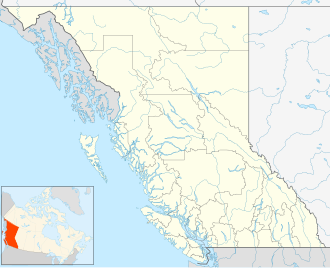| Bugaboo Provincial Park | |
|---|---|
 | |
| Location | Kootenay Land District, British Columbia, Canada |
| Nearest city | Invermere, British Columbia |
| Coordinates | 50°48′04″N116°48′09″W / 50.80111°N 116.80250°W |
| Area | 13,646 ha. (136.46 km²) |
| Established | July 13, 1995 |
| Governing body | BC Parks |
| Website | bcparks |
Bugaboo Provincial Park is a provincial park in British Columbia, Canada, located in the central Purcell Mountains.
Contents
It was established in 1995 as an amalgamation of Bugaboo Glacier Park, Bugaboo Alpine Recreation Area, and various adjacent lands. [1] The park is known primarily for the Bugaboos, a formation of mountains that attracts climbers and mountaineers, and for the Conrad Kain hut, an alpine hut managed by the Alpine Club of Canada.
